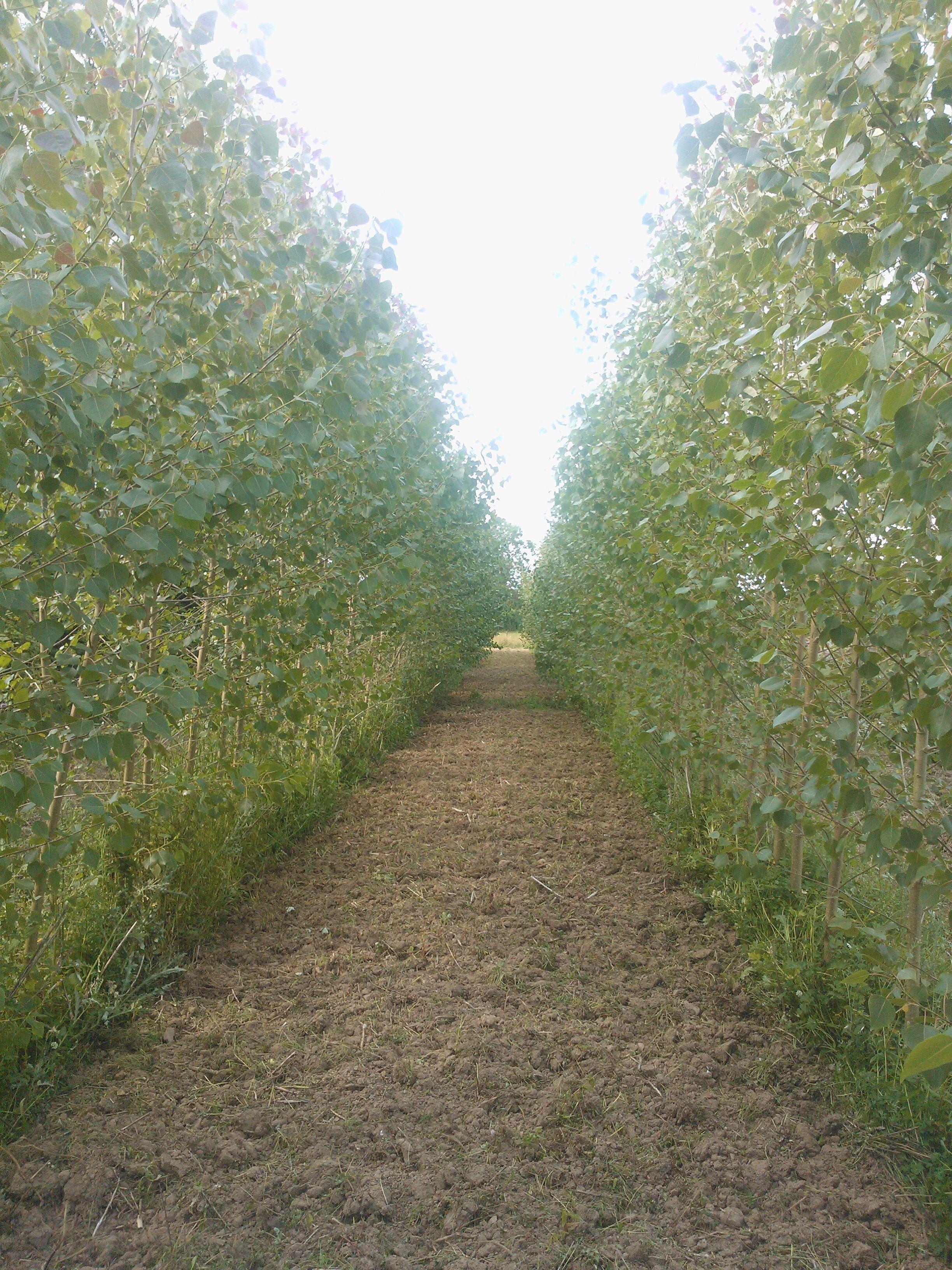SRC poplar involves the planting at close spacings (6,600/hectare). As with willow, SRC poplar should be planted as an intimate mixture of 6 varieties with different genetic backgrounds to reduce the risk of disease and pests. Planting should take place between March and June. Harvesting takes place every 2-3 years.
Strengths
- Easy to plant in rows.
- Very fast growth rate and high yields.
Weaknesses
- Apart from biomass, there are few outlets for poplar wood in the UK.
- Prefers to be a tree with a single stem so doesn't coppice as freely as willow.
Height> 20 metres
SRC poplar typically will reach 7m within 2-3 years.
Ideal Soil typeLight clay, sand, loam, and humus soils
Poplar will thrive in slightly acidic and alkali soils; however, optimum growth is observed between pH 6.0-8.0.
Persistence21 years or 7 harvests
SRC can last longer than this but it is likely that some varieties in the mix will be outcompeted by this point and starting to leave gaps that might cause harvesting issues.
Crop RiskLow risk
Main risks are from disease and pests. Using mixed clonal plantations of varieties with a wide genetic background reduces this risk significantly.
Use of cropMulti-use
- Biomass fuel
- It can be used as a fodder crop but is less favoured than willow.
How it's plantedSpring - Early Summer
SRF poplar is planted usually by hand using 1.4 m rods. Around 30 cm is pushed into the ground. The stocking rate used is usually 1,666 plant per hectare. Plantations of wider spaced trees (400 per hectare planted a 5m x 5 m spacings) are left for 20 years.








Find out potential yield on this crop